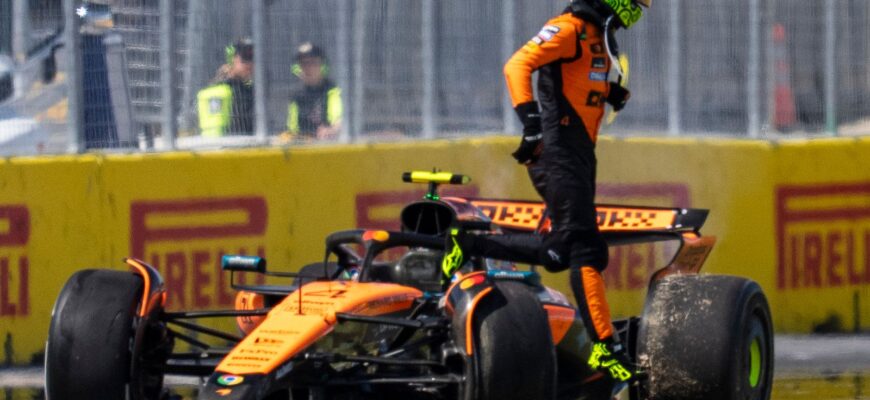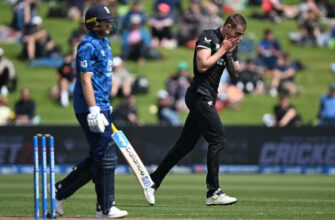
Formula 1 is a sport of high speeds, cutting-edge technology, and often, even higher drama. While the battle against rival teams is paramount, sometimes the most intense contests unfold not on the track against competitors, but within the confines of a single garage. Such is the current captivating narrative at McLaren, where the burgeoning rivalry between two of its brightest stars, Lando Norris and Oscar Piastri, has reached a critical juncture. The recent Singapore Grand Prix offered a stark reminder that managing two ambitious, championship-contending drivers is perhaps the most delicate balancing act in elite motorsport.
The Singapore Spark: More Than Just a Racing Incident
The roar of engines had barely faded in Singapore when the focus of the F1 world shifted from George Russell’s unexpected victory to a seemingly minor contact between the papaya-liveried McLarens. On the chaotic opening lap, Lando Norris, making an aggressive move into Turn 3, clipped the rear of Max Verstappen’s Red Bull. In the split-second ensuing chaos, Norris’s car lurched sideways, making contact with his teammate Oscar Piastri, who was attempting to navigate the outside line. While race stewards swiftly dismissed it as a “racing incident” causing no lasting damage, the repercussions within the McLaren camp resonated far more deeply.
From an external, regulatory perspective, it was textbook. From an internal, psychological standpoint, it was a seismic event. Piastri`s immediate radio message, “Are we cool with Lando barging me out of the way, or… what`s the go there?” followed by his pointed “That`s not fair,” underscored the raw frustration and the inherent tension brewing beneath the surface. It highlighted the fundamental conflict that arises when a team`s rules of engagement collide with a driver`s instinct for self-preservation and advancement.
The “Papaya Rules” Paradox: Ambition vs. Harmony
McLaren, under Team Principal Andrea Stella, has prided itself on its “papaya rules” – a philosophy that champions fairness from the pit wall in exchange for clean, respectful racing between its drivers. This ethos allows Norris and Piastri to compete fiercely, a strategy designed to extract maximum performance from both individuals. However, the Singapore incident, much like previous near-misses in Austria and Hungary, has brought this noble ideal crashing into the sharp realities of a championship battle.
“We want to protect this `let them race` concept. We know that as soon as you adopt this concept, you face difficulties,” explained Stella, highlighting the team`s conscious acceptance of this inherent challenge.
The paradox is clear: how do you allow two supremely talented, fiercely competitive athletes to “race” when their individual aspirations are directly opposed, especially when points are scarce and a championship hangs in the balance? Norris’s defensive argument—that any F1 driver would have seized the “big gap”—clashes with Piastri`s perception of being unfairly compromised. Each driver, in the heat of the moment, interprets the “rules” through the lens of their own race, making true objectivity an almost impossible ask.
The Pit Wall`s Predicament: Refereeing the Unrefereable
Andrea Stella`s position is unenviable. Tasked with leading a team to constructor`s glory while managing the individual ambitions of his drivers, he must walk a diplomatic tightrope. His decision not to intervene in Singapore, explaining that Norris`s contact with Piastri was a “consequence of another racing situation” (i.e., avoiding Verstappen), was a pragmatic one. Yet, it left Piastri feeling aggrieved, even if the replays later supported the team`s stance. This situation exemplifies the constant pressure on the pit wall:
- Real-time Judgement: Making critical decisions in milliseconds with incomplete information.
- Driver Psychology: Acknowledging and managing driver frustration, which Stella actively encourages drivers to vocalize rather than suppress.
- Long-term Strategy: Ensuring short-term incident management doesn`t erode long-term team cohesion or driver trust.
The F1 calendar`s relentless pace means these “good conversations” must happen quickly, dissecting every frame of telemetry and every nuance of a radio call before the next race weekend in Austin. The challenge is not merely about assigning blame, but about reinforcing boundaries and rebuilding trust, a task made exponentially harder with each passing incident.
Championship Aspirations and the Road Ahead
The stakes are higher than ever. With six races remaining, Oscar Piastri currently holds a 22-point advantage over Lando Norris. More critically, Max Verstappen`s consistent performance has allowed him to close the gap on Piastri to just 63 points. This tightening championship picture guarantees that the internal pressure at McLaren will only intensify. Every point, every position, every on-track skirmish will be magnified, scrutinized, and debated.
History is replete with examples of legendary F1 teams grappling with internal rivalries—from Prost and Senna at McLaren to Hamilton and Rosberg at Mercedes. While these rivalries often push teams to unprecedented heights, they also carry the inherent risk of implosion if not managed with absolute precision and transparency. For McLaren, the challenge is not just to maintain pace with their rivals but to master the complex human element within their own garage.
The “papaya rules” will be tested like never before. With the championship still very much alive, and two formidable talents refusing to yield, McLaren`s ability to navigate this treacherous internal landscape will define not only their immediate success but potentially their long-term legacy as a championship contender. The tightrope walk has just begun, and the margin for error is razor-thin.







